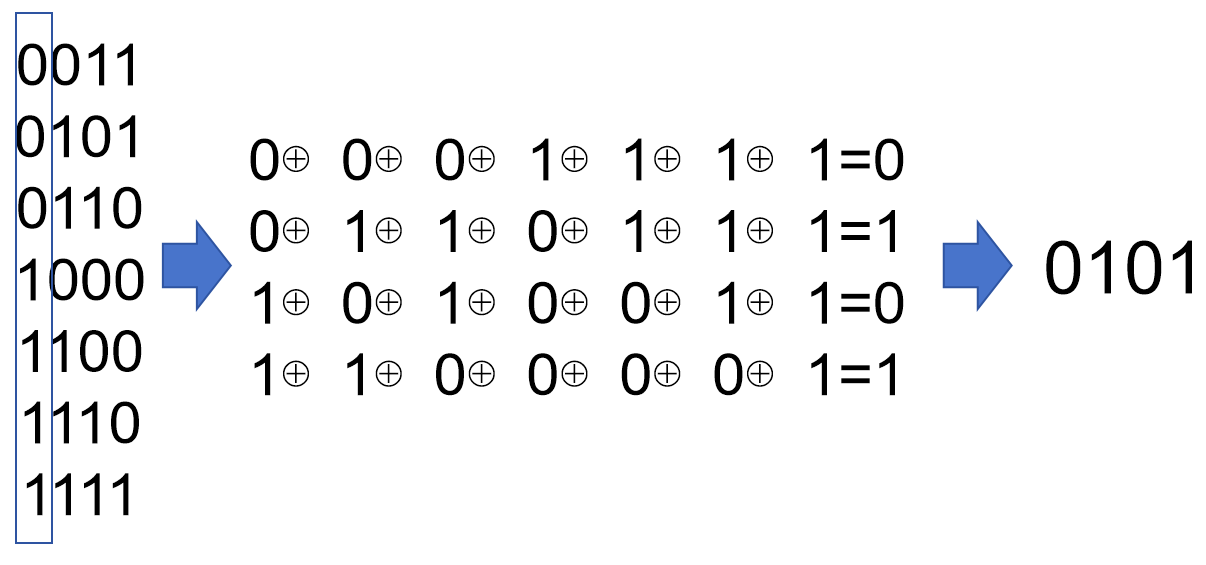前言
RedisTemplate 是 Spring Boot 访问 Redis 的核心组件,底层通过 RedisConnectionFactory 对多种 Redis 驱动进行集成,上层通过 XXXOperations 提供丰富的 API ,并结合 Spring4 基于泛型的 bean 注入,极大的提供了便利,成为日常开发的一大利器。
本文介绍如何在 SpringBoot 中集成Redis,并介绍 RedisTemplate 对象操作的常用方法。
RedisTemplate 和 StringRedisTemplate的区别:
1. 两者的关系是 StringRedisTemplate 继承 RedisTemplate。
//
// Source code recreated from a .class file by IntelliJ IDEA
// (powered by FernFlower decompiler)
//package org.springframework.data.redis.core;import org.springframework.data.redis.connection.DefaultStringRedisConnection;
import org.springframework.data.redis.connection.RedisConnection;
import org.springframework.data.redis.connection.RedisConnectionFactory;
import org.springframework.data.redis.serializer.RedisSerializer;public class StringRedisTemplate extends RedisTemplate<String, String> {public StringRedisTemplate() {this.setKeySerializer(RedisSerializer.string());this.setValueSerializer(RedisSerializer.string());this.setHashKeySerializer(RedisSerializer.string());this.setHashValueSerializer(RedisSerializer.string());}public StringRedisTemplate(RedisConnectionFactory connectionFactory) {this();this.setConnectionFactory(connectionFactory);this.afterPropertiesSet();}protected RedisConnection preProcessConnection(RedisConnection connection, boolean existingConnection) {return new DefaultStringRedisConnection(connection);}
}
2. 两者的数据是不共通的,也就是说 StringRedisTemplate 只能管理 StringRedisTemplate 里面的数据,RedisTemplate 只能管理 RedisTemplate 中的数据。
3. SDR默认采用的序列化策略有两种,一种是String的序列化策略,一种是JDK的序列化策略。
StringRedisTemplate 默认采用的是 String 的序列化策略,保存的 key 和 value 都是采用此策略序列化保存的。
RedisTemplate 默认采用的是JDK的序列化策略,保存的 key 和 value 都是采用此策略序列化保存的。
RedisTemplate默认使用的序列类在在操作数据的时候,比如说存入数据会将数据先序列化成字节数组然后在存入Redis数据库,这个时候打开Redis查看的时候,你会看到你的数据不是以可读的形式展现的,而是以字节数组显示。
那么就可以得出一个结论,如果你想使用默认的配置来操作redis,则如果操作的数据是字节数组,就是用RedisTemplate,如果操作的数据是明文,使用StringRedisTemplate。
当然在项目中真实使用时,一般是自定义RedisTemplate的Bean实例,来设置具体的序列化策略,说白了就是RedisTemplate通过自定义Bean可以实现和StringRedisTemplate一样的序列化,使用起来更加灵活。
一、Redis五种基础数据结构
首先对redis来说,所有的key(键)都是字符串。我们在谈基础数据结构时,讨论的是存储值的数据类型,主要包括常见的5种数据类型,分别是:String、List、Set、Zset、Hash。

| 结构类型 | 结构存储的值 | 结构的读写能力 |
|---|---|---|
| String字符串 | 可以是字符串、整数或浮点数 | 对整个字符串或字符串的一部分进行操作;对整数或浮点数进行自增或自减操作 |
| List列表 | 一个链表,链表上的每个节点都包含一个字符串 | 对链表的两端进行push和pop操作,读取单个或多个元素;根据值查找或删除元素 |
| Set集合 | 包含字符串的无序集合 | 字符串的集合,包含基础的方法有看是否存在添加、获取、删除;还包含计算交集、并集、差集等 |
| Hash散列 | 包含键值对的无序散列表 | 包含方法有添加、获取、删除单个元素 |
| Zset有序集合 | 和散列一样,用于存储键值对 | 字符串成员与浮点数分数之间的有序映射;元素的排列顺序由分数的大小决定;包含方法有添加、获取、删除单个元素以及根据分值范围或成员来获取元素 |
二、RedisTemplate 概述
1、Redis 是一个缓存、消息代理和功能丰富的键值存储。Spring Boot 为 Lettuce 和 Jedis 客户端库提供基本的自动配置,并为 Spring Data Redis 提供抽象。官网传送。
2、spring-boot-starter-data-redis 启动器,整合了需要的依赖项,默认情况下,它使用 Lettuce 作为客户端。这个启动器同时处理传统应用程序和反应性应用程序(reactive applications)。
3、官方还提供了一个 spring-boot-starter-data-redis-reactive 启动器,用于与具有 reactive 支持的其他存储保持一致。
4、可以像注入任何其他 Spring Bean 一样注入一个自动配置的 RedisConnectionFactory、StringRedisTemplate 或普通的 RedisTemplate 实例。class StringRedisTemplate extends RedisTemplate<String, String>
5、默认情况下,Redis 实例尝试连接本地主机(localhost)端口为 6379 的 Redis 服务器,默认使用空密码,连接 0 号数据库:RedisProperties
6、可以实现 LettuceClientConfigurationBuilderCustomizer 接口,以实现更高级的定制。如果使用的是 Jedis 客户端,则实现 JedisClientConfigurationBuilderCustomizer 接口。
三、SpringBoot通过RedisTemplate连接Redis
一、引入依赖
<!-- redis 缓存操作 -->
<dependency><groupId>org.springframework.boot</groupId><artifactId>spring-boot-starter-data-redis</artifactId>
</dependency>
<!-- pool 对象池 -->
<!-- 使用lettuce客户端需要引入commons-pool2依赖 -->
<dependency><groupId>org.apache.commons</groupId><artifactId>commons-pool2</artifactId>
</dependency>
二、基础配置
1、配置application.yml文件
配置如下:
spring:data:redis:mode: master# 地址host: 30.46.34.190# 端口,默认为6379port: 6379# 密码,没有不填password: ''# 几号库database: 1sentinel:master: masternodes: 30.46.34.190cluster:nodes: 30.46.34.190lettuce:pool:# 连接池的最大数据库连接数max-active: 200# 连接池最大阻塞等待时间(使用负值表示没有限制)max-wait: -1ms# 连接池中的最大空闲连接max-idle: 50# 连接池中的最小空闲连接min-idle: 82、RedisTemplate配置
代码如下:
/*
*自定义Redis配置类,进行序列化以及RedisTemplate设置
*/
@Configuration
@EnableConfigurationProperties({RedisProperties.class})
public class RedisConfig {@Value("${spring.data.redis.mode}")private String redisMode;private final RedisProperties properties;public RedisConfig(RedisProperties properties) {this.properties = properties;}@Beanpublic LettuceConnectionFactory redisConnectionFactory(ObjectProvider<LettuceClientConfigurationBuilderCustomizer> builderCustomizers,ClientResources clientResources) {GenericObjectPoolConfig<?> config = new GenericObjectPoolConfig<>();config.setMaxTotal(this.properties.getLettuce().getPool().getMaxActive());config.setMaxIdle(this.properties.getLettuce().getPool().getMaxIdle());config.setMinIdle(this.properties.getLettuce().getPool().getMinIdle());config.setMaxWait(this.properties.getLettuce().getPool().getMaxWait());LettucePoolingClientConfiguration clientConfiguration = LettucePoolingClientConfiguration.builder().poolConfig(config).build();switch (redisMode) {case "master":RedisStandaloneConfiguration redisStandaloneConfiguration = new RedisStandaloneConfiguration();redisStandaloneConfiguration.setDatabase(this.properties.getDatabase());redisStandaloneConfiguration.setPassword(this.properties.getPassword());redisStandaloneConfiguration.setHostName(this.properties.getHost());redisStandaloneConfiguration.setPort(this.properties.getPort());return new LettuceConnectionFactory(redisStandaloneConfiguration, clientConfiguration);case "sentinel":RedisSentinelConfiguration redisSentinelConfig = new RedisSentinelConfiguration();redisSentinelConfig.setDatabase(this.properties.getDatabase());redisSentinelConfig.setPassword(this.properties.getPassword());redisSentinelConfig.setMaster(this.properties.getSentinel().getMaster());redisSentinelConfig.setSentinels(this.properties.getSentinel().getNodes().stream().map(RedisNode::fromString).collect(Collectors.toList()));return new LettuceConnectionFactory(redisSentinelConfig, clientConfiguration);case "cluster":RedisClusterConfiguration redisClusterConfiguration = new RedisClusterConfiguration();redisClusterConfiguration.setPassword(this.properties.getPassword());redisClusterConfiguration.setClusterNodes(this.properties.getCluster().getNodes().stream().map(RedisNode::fromString).collect(Collectors.toList()));return new LettuceConnectionFactory(redisClusterConfiguration, clientConfiguration);default:throw new IllegalArgumentException("无效的redis mode配置");}}@Beanpublic RedisTemplate<String, Object> redisTemplate(RedisConnectionFactory connectionFactory){ObjectMapper om = new ObjectMapper();om.setVisibility(PropertyAccessor.ALL, JsonAutoDetect.Visibility.ANY);om.enableDefaultTyping(ObjectMapper.DefaultTyping.NON_FINAL, JsonTypeInfo.As.PROPERTY);Jackson2JsonRedisSerializer<Object> jackson2JsonRedisSerializer =new Jackson2JsonRedisSerializer<>(om, Object.class);RedisTemplate<String, Object> template = new RedisTemplate<>();// 设置数据源的连接工厂(默认会传入框架中自带的,也就是读取配置文件装配的LettuceConnectionFactory) template.setConnectionFactory(connectionFactory);// 使用StringRedisSerializer序列化和反序列化redis的key值template.setKeySerializer(new StringRedisSerializer());// 设置值(value)的序列化采用Jackson2JsonRedisSerializertemplate.setValueSerializer(serializer);// 使用StringRedisSerializer序列化和反序列化redis hash类型的key值template.setHashKeySerializer(new StringRedisSerializer());// 序列化和反序列化redis hash类型的value值template.setHashValueSerializer(serializer);template.afterPropertiesSet();return template;}}3. 编写测试类
package com.zpli.web.test;/*** created at 2024/7/9 19:08** @author somnuszpli*/import org.assertj.core.api.Assertions;
import org.junit.Test;
import org.junit.runner.RunWith;
import org.springframework.beans.factory.annotation.Autowired;
import org.springframework.boot.test.context.SpringBootTest;
import org.springframework.data.redis.core.RedisTemplate;
import org.springframework.test.context.junit4.SpringRunner;@RunWith(SpringRunner.class)
@SpringBootTest
public class RedisTemplateTest {@Autowiredprivate RedisTemplate redisTemplate;// <1>@Testpublic void test() throws Exception {redisTemplate.opsForValue().set("student:1", "zpli"); // <2>Assertions.assertThat(redisTemplate.opsForValue().get("student:1")).isEqualTo("kirito");}
}<1> 引入了 RedisTemplate,这个类是 spring-starter-data-redis 提供给应用直接访问 redis 的入口。从其命名就可以看出,其是模板模式在 spring 中的体现,与 restTemplate,jdbcTemplate 类似,而 springboot 为我们做了自动的配置,具体已在上文详解。
<2> redisTemplate 通常不直接操作键值,而是通过 opsForXxx() 访问,在本例中,key 和 value 均为字符串类型。绑定字符串在实际开发中也是最为常用的操作类型。
四、详解 RedisTemplate 的 API
RedisTemplate 为我们操作 Redis 提供了丰富的 API,可以将他们简单进行下归类。
1.常用数据操作
| 方法 | 描述 |
|---|---|
| Boolean hasKey(K key) | key 是否存在 |
| Long countExistingKeys(Collection<K> keys) | redis 中存在 keys 的数量 |
| Boolean delete(K key) | 删除 key |
| Long delete(Collection<K> keys) | 批量删除 keys |
| DataType type(K key) | 获取 key 的类型 |
| void rename(K oldKey, K newKey) | 重命名 key |
| Boolean renameIfAbsent(K oldKey, K newKey) | 如果存在,重命名 key |
| Boolean expire(K key, long timeout, TimeUnit unit) | 为 key 设置过期时间 |
| Boolean expireAt(K key, Date date) | 为 key 设置过期时间 |
| Long getExpire(K key) | 获取 key 的过期时间 |
| Long getExpire(K key, TimeUnit timeUnit) | 获取 key 的过期时间 |
| Boolean persist(K key) | 移除 key 的过期时间,使其变为永久 |
| Boolean move(K key, int dbIndex) | 将 key 移动到 dbIndex 中 |
若以 bound 开头,则意味着在操作之初就会绑定一个 key,后续的所有操作便默认认为是对该 key 的操作,算是一个小优化。
| API | 返回值类型 | 说明 |
|---|---|---|
| redisTemplate.opsForValue() | ValueOperations | 操作 String 类型 数据 |
| redisTemplate.opsForHash() | HashOperations | 操作 Hash 类型数据 |
| redisTemplate.opsForList() | ListOperations | 操作 List 类型数据 |
| redisTemplate.opsForSet() | SetOperations | 操作 Set 类型数据 |
| redisTemplate.opsForZSet() | ZSetOperations | 操作 SortedSet 类型数据 |
| redisTemplate.boundValueOps(K key) | BoundValueOperations | 操作 String 类型 数据 |
| redisTemplate.boundHashOps(K key) | BoundHashOperations | 操作 Hash 类型数据 |
| redisTemplate.boundListOps(K key) | BoundListOperations | 操作 List 类型数据 |
| redisTemplate.boundSetOps(K key) | BoundSetOperations | 操作 Set 类型数据 |
| redisTemplate.boundZSetOps(K key) | BoundZSetOperations | 操作 SortedSet 类型数据 |
ValueOperations<String, Object> valueOperations = redisTemplate.opsForValue();valueOperations.set("name", "zpli");Object age = valueOperations.get("name");BoundValueOperations<String, String> boundValueOperations = stringRedisTemplate.boundValueOps("name");String nameByBound = boundValueOperations.get();2. 几种数据结构操作的具体用法
String 类型
org.springframework.data.redis.core.ValueOperations 处理 String 类型数据。
【ValueOperations源码】
调用ValueOperations<String, String> valueOperations = stringRedisTemplate.opsForValue();得到ValueOperations。然后可通过valueOperations调用相应方法。当然也可以直接通过stringRedisTemplate.opsForValue()进行操作。
package com.zpli.web;import org.junit.Test;
import org.junit.runner.RunWith;
import org.springframework.beans.factory.annotation.Autowired;
import org.springframework.boot.test.context.SpringBootTest;
import org.springframework.data.redis.core.RedisTemplate;
import org.springframework.data.redis.core.StringRedisTemplate;
import org.springframework.data.redis.core.ValueOperations;
import org.springframework.test.context.junit4.SpringRunner;/*** created at 2024/7/10 15:23* 注入 RedisTemplate 或者 StringRedisTemplate 其中一个即可,前者是后者的父类,它们都已经默认在 Spring 容器中** @author somnuszpli*/
@RunWith(SpringRunner.class)
@SpringBootTest
public class RedisTemplateTest {@Autowiredprivate RedisTemplate<String, Object> redisTemplate;@Autowiredprivate StringRedisTemplate stringRedisTemplate;@Testpublic void test1() {ValueOperations<String, Object> valueOperations = redisTemplate.opsForValue();valueOperations.set("age", 24);Object age = valueOperations.get("age");System.out.println(age);stringRedisTemplate.opsForValue().set("name", "zpli");String name = stringRedisTemplate.opsForValue().get("name");System.out.println(name);}
}
| 方法 | 描述 |
|---|---|
| set(K key, V value) | 存储到 redis。key 已经存在时,覆盖旧值,不存在时新增。 key、value 不能为 null |
| set(K key, V value, long timeout, TimeUnit unit) | 设置失效时间为指定时间。超过后 key 会被移除 |
| set(K key, V value, Duration timeout) | 设置超时时间,Duration 是 Jdk 8 的 API。 超过指定时间后,key 被移除 |
| set(K key, V value, long offset) | 覆写(overwrite)给定 key 所储存的字符串值,从偏移量 offset 开始 |
| get(Object key) | 获取指定 key 的 value,key 不存在时,返回 null。key 不能 null |
| getAndSet(K key, V value) | 获取 key 的旧值,并赋值新的 value。key 不能 null |
| get(K key, long start, long end) | 获取指定 key 指定范围的字符串 [start,end],从索引 0 开始。 key 不能 null |
| append(K key, String value) | 将新的 value 追加到 key 的旧值尾部,key 不存在时,自动新建。key 不能为 null |
| Long size(K key) | 获取 key 的 value 的长度,key 不存在时,返回 0。key 不能为 null |
| Boolean setIfAbsent(K key, V value) | 如果 key 不存在,则新增,否则不改变原来的值。其余重载方法与 set 方法对应。key、value 不能为 null |
| Boolean setIfAbsent(K key, V value, long timeout, TimeUnit unit) Boolean setIfAbsent(K key, V value, Duration timeout) | 1、key 不存在时进行设值,返回 true; 否则 key 存在时,不进行设值,返回 false. 2、此方法相当于先设置 key,然后设置 key 的过期时间,它的操作是原子性的,是事务安全的。 3、相当于:SET anyLock unique_value NX PX 30000,NX是指如果key不存在就成功,key存在返回false,PX可以指定过期时间 |
| Boolean setIfPresent(K key, V value, Duration timeout) | key 存在时,才修改它的值,否则不新增,与 setIfAbsent 相反 |
| Long increment(K key) | 将存储为字符串值的整数值增加1,并返回结果。 key 不存在时自动新增 |
| Long increment(K key, long delta) | 将存储为字符串值的整数值增加 delta,并返回结果。 key 不存在时自动新增。delta 为负数时,做减法 |
| Double increment(K key, double delta) | 将存储为字符串值的小数值增加 delta,并返回结果。 key 不存在时自动新增 |
| Long decrement(K key) | 将存储为字符串的整数值减1,key 不存在时自动创建 |
| Long decrement(K key, long delta) | 减去指定的数值,key 不存在时自动创建。delta为负数时,做加法 |
| List multiGet(Collection keys) | 同时获取多个 key 的值,按请求的 key 的顺序返回对应的 value,key 不存在的返回 null |
| multiSet(Map<? extends K, ? extends V> map) | 同时存储多个 key-value |
| Boolean multiSetIfAbsent(Map<? extends K, ? extends V> map) | 当 key 不存在时新增,否则不进行操作 |
List 类型
org.springframework.data.redis.core.ListOperations 处理 List 类型数据。
【ListOperations源码】
| 方法 | 描述 |
|---|---|
| Long size(K key) | 返回存储在键中的列表的长度。键不存在时,返回 0;key 存储的值不是列表时返回错误。 |
| Long leftPush(K key, V value) | 将指定的值插入到列表的头部。键不存在自动创建。(从左边插入)。返回 list 的大小(size)。 |
| Long leftPushAll(K key, V... values) | 批量从左插入。key 不能为 null。返回 list 的大小(size)。 |
| Long leftPushAll(K key, Collection values) | 批量从左插入。key,values 不能为 null。 |
| Long leftPush(K key, V pivot, V value) | 对于名字为 key 的 list,从左往右先查询第一个出现的 pivot 元素,然后将 value 插入到它的左边。 |
| Long leftPushIfPresent(K key, V value) | 只有当 key 存在时,才新增,否则不处理。 |
| Long rightPush(K key, V value) | 右侧插入,key 不存在时,自动创建。 |
| Long rightPush(K key, V pivot, V value) | 从左往右查找第一个 pivot 元素,然后将新的 value 插入到它的右侧。 |
| Long rightPushAll(K key, Collection values) | 右侧批量插入 |
| Long rightPushAll(K key, V... values) | 右侧批量插入 |
| Long rightPushIfPresent(K key, V value) | 当 key 存在时,进行右侧插入,否则不处理。 |
| set(K key, long index, V value) | 为名字为 key 的列表索引为 index 的元素替换为新的 value 值。key 必须存在,index 索引不能越界 |
| Long remove(K key, long count, Object value) | 删除列表(key) 中指定个数(count)的元素(value)。count=0:删除所有 value;count>0:从左往右删除 count 个 value;count<0,从右往左删除。 |
| List range(K key, long start, long end) | 查询 list 的元素值,索引范围为 [start,end],-1 表示倒数第一个元素 |
| V index(K key, long index) | 获取列表中指定索引处的元素。index 越界时,返回 null;key 不存在时,返回 null。索引 index=-1 表示倒数第一个元素。 |
| V leftPop(K key) | 弹出最左边的元素,弹出之后该值在列表中将不复存在。当列表为空时,返回 null。 |
| V rightPop(K key) | 弹出最右边的元素,弹出之后该值在列表中将不复存在。当列表为空时,返回 null。 |
| V leftPop(K key, long timeout, TimeUnit unit) | 弹出最左边的元素,当元素不存在时,线程阻塞等待,直到存在新元素,或者超时抛出异常 |
| V rightPop(K key, long timeout, TimeUnit unit) | 弹出最右边的元素,当元素不存在时,线程阻塞等待,直到存在新元素,或者超时抛出异常 |
Hash 类型
org.springframework.data.redis.core.HashOperations 处理 Hash 类型数据。
【HashOperations源码】
| 方法 | 描述 |
|---|---|
| Long size(H key) | 获取指定 hash(key) 的元素个数,kye 不存在时,返回 0 |
| Boolean hasKey(H key, Object hashKey) | 判断 hash 中 是否存在指定的元素,key 不存在时,返回 false |
| Set keys(H key) | 获取指定 hash(key) 中所有的 hashKey。key 不存在时,返回空集合[] |
| List values(H key) | 获取指定 hash(key) 的所有值。key 不存在时,返回空 list |
| Long delete(H key, Object... hashKeys) | 删除指定的 hash(key) 中指定的元素(hansKeys),返回成功删除元素个数,key 不存在时返回 0 |
| void put(H key, HK hashKey, HV value) | 往 key 中插入键值对 hashKey-value。hashKey 重复时,后插入的覆盖旧值。key 不存在时,自动新增 |
| void putAll(H key, Map<? extends HK, ? extends HV> m) | 单次插入多个元素。key 不存在时自动新增 |
| Boolean putIfAbsent(H key, HK hashKey, HV value) | key 或者 hashKey 不存在时,才插入值 |
| HV get(H key, Object hashKey) | 获取 hash 中指定的 hashKey,key 不存在时,返回 null |
| Map<HK, HV> entries(H key) | 获取指定 key 的 hash map。key 不存在时,返回空 map |
| Long lengthOfValue(H key, HK hashKey) | 获取 key 对应的 hash map 的 hashKey 对应的元素值的长度 |
| List multiGet(H key, Collection hashKeys) | 同时获取 key 对应的 hash map 中的多个元素值,hashKey 不存在时,返回 null |
| Long increment(H key, HK hashKey, long delta) | 为指定 key 的 hash map 中的元素 hashKey 的数值加上整数值 delta。key 不存在时,直接新增 |
| Double increment(H key, HK hashKey, double delta) | 为指定 key 的 hash map 中的元素 hashKey 的数值加上浮点数值 delta。key 不存在时,直接新增 |
Set 类型
org.springframework.data.redis.core.SetOperations 处理无序集合(Set) 类型数据。
【SetOperations源码】
| 方法 | 描述 |
|---|---|
| Long add(K key, V... values) | 往 set 中添加元素,key 不存在时,自动新建。value 重复时,覆盖旧值。返回 set 中的元素个数。 |
| Long remove(K key, Object... values) | 移除 set 中的元素。返回 set 中剩余的元素个数。set 中没有元素时,自动删除 key。key 不存在时不影响。 |
| Boolean move(K key, V value, K destKey) | 将 key 对应的 set 中的值 value 剪切到目标 set(destKey) 中。key、value、destKey 不存在时,不做任何操作. |
| V pop(K key) | 随机弹出 set 中的一个元素,弹出后,set 中就没有了。当 set 为空时,返回 null。 |
| List pop(K key, long count) | 随机弹出 set 中 count 个元素,如果 set 的大小为 3,而 count 为 5,此时只会返回 3 个元素。 |
| Long size(K key) | 获取 key 对应 set 的集合大小. key 不存在时,返回 0 |
| Set members(K key) | 获取 set 中所有的元素,key 不存在时,返回空 set。 |
| V randomMember(K key) | 从 set 中随机返回一个元素,set 中此元素还会存在。key 不存在时,返回 null。 |
| List randomMembers(K key, long count) | 随机返回 set 中 count 个元素。 |
| Boolean isMember(K key, Object o) | 判断 key 对应的 set 中是否包含元素 o。key 不存在时,返回 false。 |
| Set union(K key, K otherKey) | 获取 key 与 otherKey 对应的 set 的并集。旧值不受影响,返回合并后的值。 |
| Set union(K key, Collection otherKeys) | 获取多个 set 的并集 |
| Long unionAndStore(K key, K otherKey, K destKey) | 求 key 、otherKey 的 set 并集,并将结果添加到 destKey 中。destKey 不存在时,自动创建。返回新集合中的元素个数。当 destKey 中事先已经有值,则会被先清除。 |
| Long unionAndStore(K key, Collection otherKeys, K destKey) | 将多个 set 的并集结果放入到 destKey 对应的 set 中,destKey 不存在时,自动创建。当 destKey 中事先已经有值,则会被先清除。 |
| Set difference(K key, K otherKey) | 求 key 与 otherKey 对应的 set 的差集,key 减去 otherKey 后剩余的结果。 |
| Set difference(K key, Collection otherKeys) | 获取 key 与所有 otherKeys 的差集。 |
| Long differenceAndStore(K key, K otherKey, K destKey) | 将差集结果放入到 destKey 中。当 destKey 中事先已经有值,则会被先清除。 |
| Long differenceAndStore(K key, Collection otherKeys, K destKey) | 将差集结果放入到 destKey 中。当 destKey 中事先已经有值,则会被先清除。 |
| Set intersect(K key, K otherKey) | 获取 key 与 otherKey 的交集,双方都拥有的元素 |
| Set intersect(K key, Collection otherKeys) | 获取 key 与其它所有 otherKeys 的交集 |
| Long intersectAndStore(K key, K otherKey, K destKey) | 将交集结果放到 destKey 集合中。当 destKey 中事先已经有值,则会被先清除。 |
| Long intersectAndStore(K key, Collection otherKeys, K destKey) | 将交集结果放到 destKey 集合中。当 destKey 中事先已经有值,则会被先清除。 |
zset 类型
org.springframework.data.redis.core.ZSetOperations 处理有序集合(Set) 的数据。
【ZSetOperations源码】
| 方法 | 描述 |
|---|---|
| Boolean add(K key, V value, double score) | 为有序集合添加元素. 如果 value 已经存在,则更新. score 表示权重,用于排序,值越小,排序越靠前(由小到大)。key 不存在时,直接新增。成功插入时返回 true,失败时返回 false。 |
| Long rank(K key, Object o) | 获取元素 o 在有序集合中的索引 |
| Set range(K key, long start, long end) | 获取有序的集合中指定索引范围的值,索引从0开始,-1 表示倒数第一个元素。 |
| Set rangeByScore(K key, double min, double max) | 根据权重范围查询 |
| Set rangeByScore(K key, double min, double max, long offset, long count) | offset 表示偏移量,count 表示需要获取的个数 |
| Long count(K key, double min, double max) | 获取权重在 [min,max] 直接的元素个数 |
| Long remove(K key, Object... values) | 删除有序集合中指定的元素(value) |
| Long removeRange(K key, long start, long end) | 删除有序集合中指定索引范围内的元素 |
| Long removeRangeByScore(K key, double min, double max) | 删除有序集合中指定权重范围内的元素 |
| Long zCard(K key) | 获取集合的大小 |
| Long size(K key) | 获取集合的大小,底层调用 zCard |
| Double score(K key, Object o) | 获取集合中指定元素的权重 |

















![[Spring] Spring Web MVC案例实战](https://i-blog.csdnimg.cn/direct/67dc72fef8b849c7b4cb4cfa552c0ead.png)

